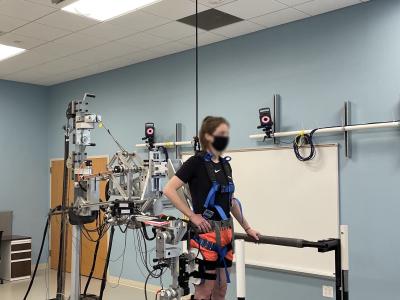
We developed, implemented, and assessed the performance of two forms of plug-in type repetitive controllers (RC) for enhancing the transparency of a lower extremity exoskeleton that operates to support walking function. One controller is a first order RC (SING) consisting of a single period matched to the self-selected cadence of the participant. The second is a novel 'parallel' RC (PARA) which consists of a library of integrated RCs with varying periods, intended to accommodate a wider range of gait cycle times.
- Categories:

